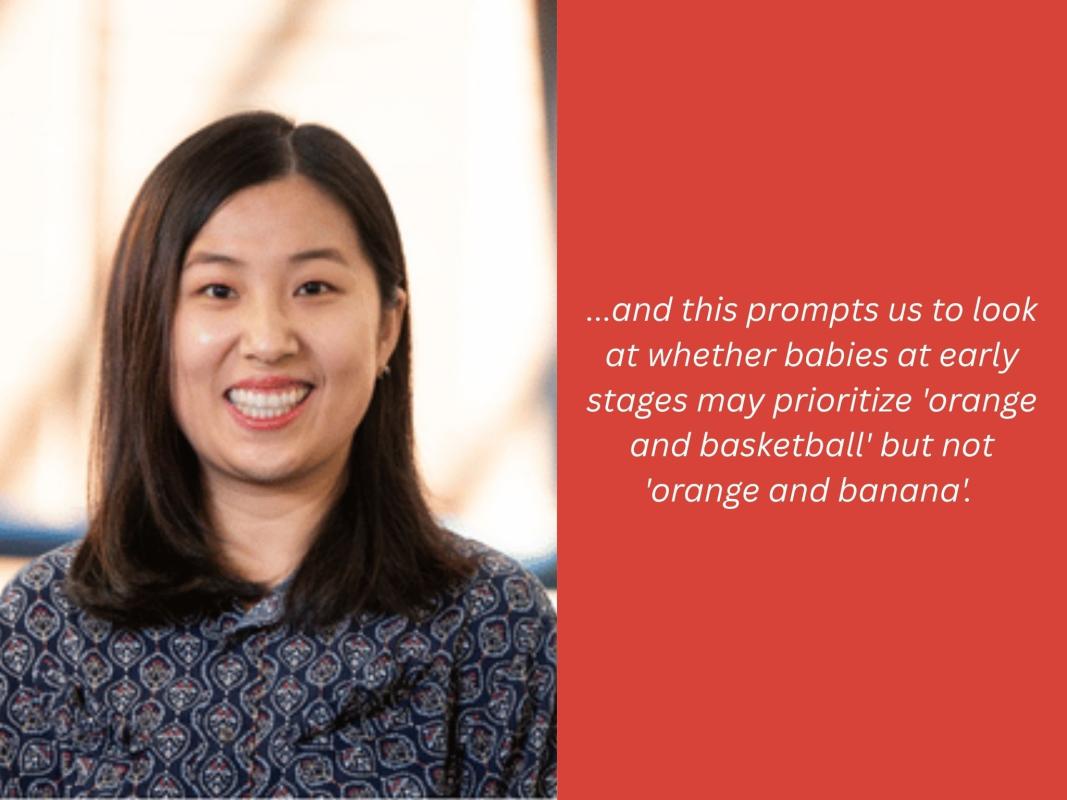LangSci recently sat down with our hardworking Postdoctoral Fellow Representative, Dr. Xin Sun (Psychology), whose contributions have helped bring to life multiple events for our graduate and postdoctoral members. Xin has played a central role in developing the themes and planning our annual Language Sciences Graduate and Postdoctoral Research Day conferences.
She is currently collaborating with our Founding Co-Director Janet Werker (Psychology) and LangSci member Alexis Black (Audiology and Speech Sciences) on their SSHRC Insight-funded project on toddlers'/infants' lexico-semantic representations. In this Q&A, we take a closer look at the project, how this interdisciplinary collaboration came together, and what initially drew Xin to this area of research.
About this study
While adult semantic networks are typically organized around category-based, taxonomic (trees are plants) and situation-based, thematic (trees provide shade), and perceptual (trees are green) relations, this project compares the development of semantic systems in infants and toddlers, particularly those growing up in English dominant vs representative immigrant communities in Canada.
Determining how and when language and culture first begin to influence semantic feature relations is key to a deeper understanding of similarities and differences in how language works among Canada's diverse linguistic and cultural communities. It addresses the foundational question in language and cognitive development, specifically the assumption that infants organize concepts the same way adults do.
How was this collaboration between you, Janet, and Alexis initiated?
I came to work with Janet with one of the ideas to study how babies/children associate words with each other, this idea comes from my observation that some Chinese words signature their semantic categories, for example, in English, the category vehicle has different word members, like bus, car, train, etc. In Chinese, this category is called 车, and all these word members have the category word after it, like bus is '公交车', car is '汽车', and train is '火车', so I wonder if this way of naming words will help Chinese-speaking children build stronger semantic associations between these words. At the time, Janet and Alexis also just planned to start a project looking at how babies/children associate word objects with different semantic features; say bus and train are taxonomically related. After I arrived at Janet's lab, we began planning this study.
Did any previous work inspire this project, or inspire you in particular to explore this study?
Previous work did inspire this project. In the adult literature, we mostly talk about two semantic relations: taxonomic (category-based) and thematic (situation-, event-based). For example, banana and orange are taxonomically related as they belong to the same category; banana and monkey are thematically related because monkeys eat bananas (occur in one situation). We never group orange and basketball together. But recent literature has found that babies may pay more attention to perceptual features like colour and shape to group things together, and this prompts us to look at whether babies at early stages may prioritize 'orange and basketball' but not 'orange and banana'.
She shared the paper that helped shape this direction: Peters, R., & Borovsky, A. (2019). Modeling early lexico-semantic network development: Perceptual features matter most. Journal of Experimental Psychology: General, 148(4), 763.
